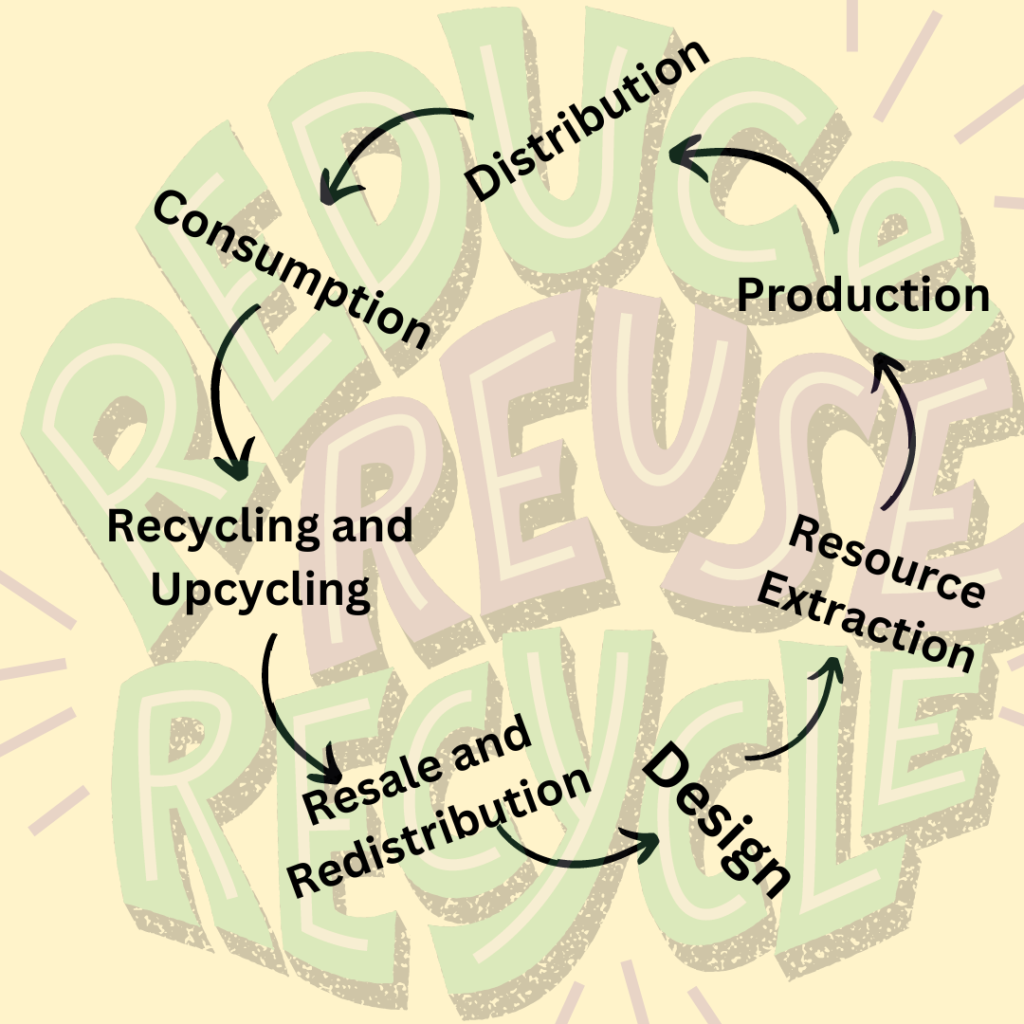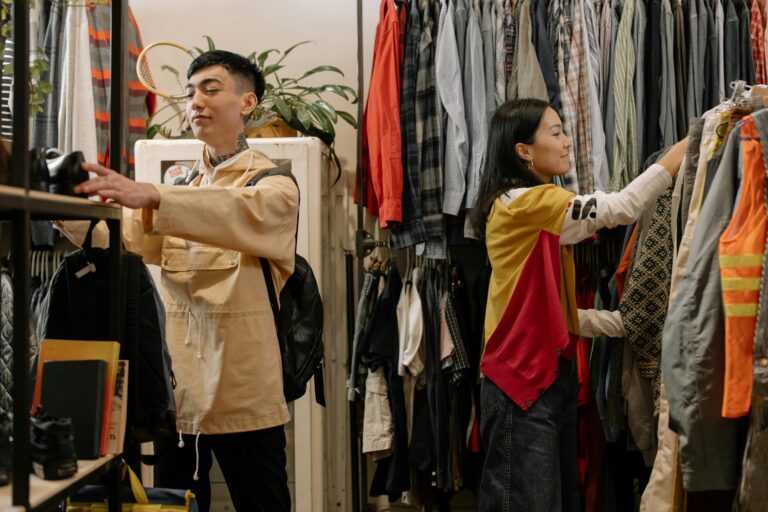Did you know that only 8% of the clothes we consume globally get recycled? The remaining 92%?
They end up in landfills, contributing significantly to environmental pollution. This staggering statistic highlights the urgent need for a shift towards more sustainable practices in the fashion industry.
The Problem with Fast Fashion
Fast fashion brands produce clothing at an alarming rate, following fleeting trends with cheap, unethical materials. These materials often can’t be recycled and contribute heavily to landfill waste.
Many of these garments are so poorly made that they become unwearable after just a few uses. This linear fashion economy follows a take-make-dispose model, where products are made, consumed, and then discarded.
What is Circular Fashion?
Circular fashion, also known as the circular fashion economy, offers a sustainable alternative. The goal is to minimize waste and pollution by keeping materials in use for as long as possible. This is achieved through a closed-loop system where materials are continuously recycled and reused, creating a zero-waste cycle.

The Rise of Circular Fashion
The concept of circular fashion originated in the early 2000s as a response to the negative environmental impact of the linear fashion industry. In the 1990s, awareness of pollution and environmental damage grew across various industries, including fashion.
The Reduce, Reuse, and Recycle concept also gained popularity, leading people to embrace thrift and vintage clothing.
As fast fashion evolved in the 2000s, concerns about environmental and labor conditions became more prominent.
According to Greenpeace, global clothing production doubled from 2000 to 2014, amplifying the need for sustainable practices.
Movements like “Slow Fashion,” “Buy Less, Choose Well,” and “Who Made My Clothes?” gained momentum, promoting secondhand shopping, consignment stores, thrift stores, and vintage shops.
In recent years, circular fashion has gained significant attention, with many brands and designers adopting sustainable practices.
How Consumers Can Support Circular Fashion?
Consumers play a crucial role in promoting a circular fashion economy. Here are some sustainable fashion practices you can adopt:
Buy Second-Hand Clothes
Shopping secondhand is a fantastic way to find unique and affordable fashion items. Explore thrift stores, vintage shops, consignment stores, and online platforms to discover pre-loved clothes. By doing so, you join the movement to reduce waste and embrace sustainable fashion.
Repair and Repurpose Old Clothes
Instead of discarding clothes with minor issues, repair, mend, or alter them. This not only reduces waste but also saves money. Follow care instructions to extend the life of your garments.
Donate or Recycle Unwanted Clothes
Participate in clothing recycling programs. Many brands have initiatives to collect old clothing for recycling. Consider renting clothes for special occasions or participating in clothing swaps with friends to reduce the demand for new items.
Support Sustainable Brands
Choose brands that prioritize sustainability, transparency, and ethical practices. Look for certifications and check the brand’s website for information on their commitment to the environment.
By adopting these practices, consumers can help reduce waste and pollution in the fashion industry and support the shift towards a more sustainable and circular fashion economy.









